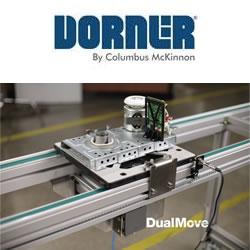NRL Test Robotic Fueling of Unmanned Surface Vessels
Providing the host ship the capability to refuel USVs without the need to bring them aboard ship enhances mission efficiency and reduces host ship exposure
WASHINGTON--Engineers from the NRL Spacecraft Engineering Department (SED) successfully demonstrate the robotic fluids transfer from a stationary platform to an Unmanned Surface Vehicle (USV) in wave heights greater than three feet. The Rapid Autonomous Fuel Transfer (RAFT) project exhibits the ability to track the motion of a Sea Fox naval vessel, safely emplace a magnetic refueling fitting to an on-board refueling receptacle and successfully complete fluids transfer.
Under current circumstance, USV refueling demands that a grappled connection, usually by hand, be made between the USV and the refueling vessel.
"Refueling a USV at sea, particularly in adverse weather or in high sea states, can prove difficult and often dangerous," said Dr. Glen Henshaw, Attitude Control Section, SED Control Systems Branch. "Transferring our extensive knowledge and proven success of robotic spacecraft servicing can prove equally successful in reducing risks at sea."
Providing the host ship the capability to refuel USVs without the need to bring them aboard ship enhances mission efficiency and reduces host ship exposure. This works to improve the effectiveness of naval USV missions and decrease risks to personnel and potential damage to vessels and equipment.
Experimenting with both fully autonomous and human-controlled operations at the U.S. Army Aberdeen Test Center wave simulator facility, NRL engineers completed approximately 60 trial refueling attempts at sea states ranging from zero, or calm seas, to 3.25, or maximum wave heights in excess of three feet, with a demonstrated high rate of success.
Funded by the Defense Advanced Research Projects Agency (DARPA), the Rapid Autonomous Fuel Transfer (RAFT) project teamed NRL with Clemson University, Science Applications International Corporation (SAIC) and Space and Naval Warfare Systems Command (SPAWAR). NRL was the lead robotics integrator and designed the robotics system.
Further robotic transfer tests will possibly include land-based autonomous HMMV (High-Mobility Multipurpose Wheeled Vehicle) applications without the need to stop driving and on-air Unmanned Aerial Vehicle (UAV) refueling.
The USV Sea Fox was developed for Navy missions to provide force protection with more flexibility in Enhanced Maritime Interdiction Operations and safer Intelligence, Surveillance and Reconnaissance (ISR) gathering to aid in threat assessment, decision-making, and situational awareness, prior to escalation to lethal actions.
The U.S. Naval Research Laboratory's Spacecraft Engineering Department (SED) serves as the focal point for the Navy's in-house spacecraft bus capability. Research and development activities range from concept and feasibility studies through initial on orbit space systems operation. SED's Robotics Engineering and Control Laboratory serves as a national test bed to support research in the emerging field of space robotics including autonomous rendezvous and capture, remote assembly operations, and machine learning.
Featured Product

